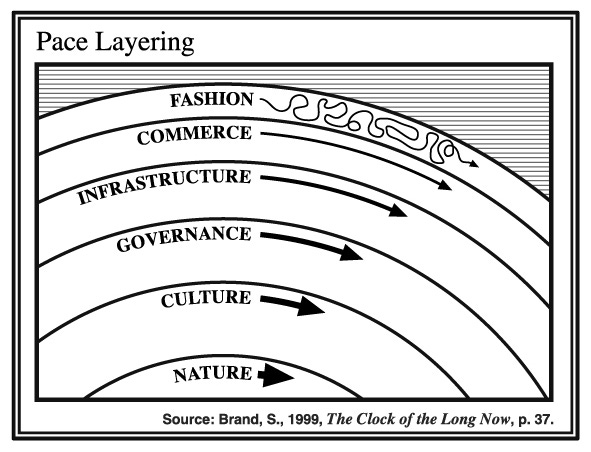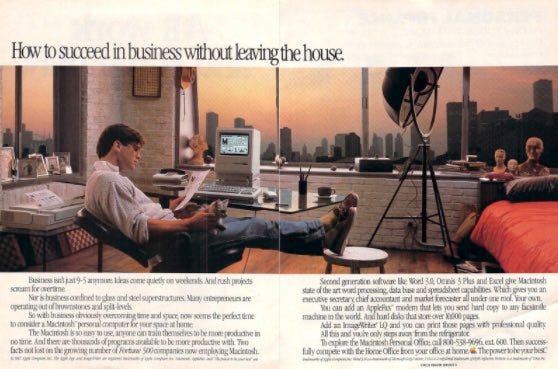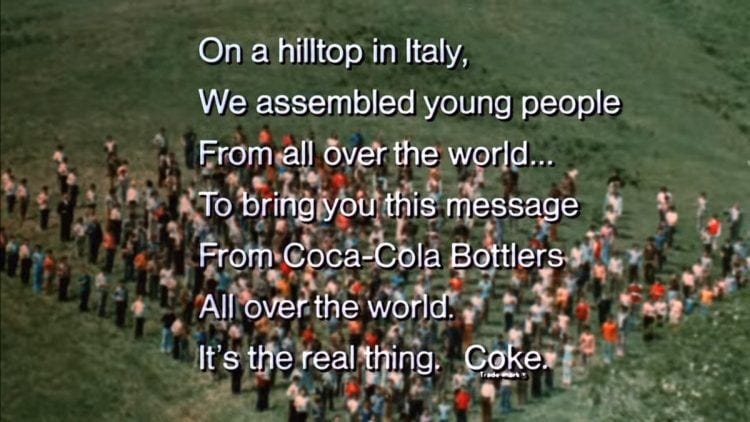TLDR:
In honor of the historic rap beef we are in, I’ll keep it in-theme.
How boring would rap be if it only came out of NYC. Rap culture is downstream of the cities they belong to. And I think everyone would agree that rap became more vibrant as stars came from different cities.
Right now, we are effectively in the single city state era of hardware. Cupertino determines all. At best we are in the east coast / west coast era, except it’s mobile vs desktop/web.
NEW HARDWARE, and subsequently the downstream software culture, can be our South and Chicago moments. Outkast and Ye. NEW HARDWARE from the kids is like “The South’s got something to say.”
The Full Piece:
Diversity of hardware, creates richer software cultures.
I’ll keep repeating this throughout the 2020’s.
Hardware embeds itself into the nature layer, and thus our cultures are downstream of our hardware. This framework not only allows us to access new understandings of our modern cultures, but also why there are conflicts when new cultures emerge to compete with previously reigning cultures. Or why some, like crypto, remain niche.
New Hardware, New Images
the fellow members of even the smallest nation will never know most of their fellow members, meet them, or even hear of them, yet in the minds of each lives the image of the communion... Communities are to be distinguished, not by their falsity or genuineness, but in the style in which they are imagined.
— Benedict Anderson, Imagined Communities
If I had to take a bet of what the majority of iPhone owners are doing right now, it would be very simple → they’re looking at their iPhone. Hardware that powerful, produces an image that is equally powerful and equally shared. The iPhone’s image is one of self-attention.
Each hardware paradigm releases a sort of canonical image that goes along with it. Thinking about that image, can also give us future clarity of the types of images we want to see as our future.
We used the above image in our Mars talk. It’s powerful because of how truly ahead it was. The ad came out in 1987, and it wouldn’t be until 2020 when this image was fully realized for all of us. Locked indoors due to Covid, and forced to produce shareholder value on our computers without skipping a beat.
This image IS the central axis of the personal computer revolution. Right next to the bed, looking out at a beautiful skyline. All while emphasizing that you will be successful. That computer owners have this new power… and THAT is your new community.
The image of the activity of the device, is the community of that device. We collectively tune into Apple Keynotes. It’s the binding sermon for the massive congregation.
So the question becomes, what are the new images we might generate? Why might it resonate? Steve’s ghost is ringing ~ reminding us that marketing is about values.
For me, the Apple image started chipping with the prevalence of the iPad baby. That’s a terrifying image for me. The bicycle for the mind turned into a pacifier.
The positive side → the necessity for new images became crystal clear. The negative side → images have become easier to generate.
Something known within the hardware community is that the device IS the distribution agent. People simply love to share gadgets. Device produces image that helps us rethink ourselves → image become easily shareable. The viral factor is almost baked in. (Reminds me of this Real Life piece “The Glint”)
Now the point of this myth is the fact that men at once become fascinated by any extension of themselves in any material other than themselves.
- Marshall McLuhan, Understanding Media - The Gadget Lover: Narcissus as Narcosis
The ease of producing the image conflicts with the difficulty of producing a breakthrough. Our primary orientation around software doesn’t make this easier. Software is cheap. Easy to write, rewrite, delete, etc. And tends to be free for the consumer.
Hardware produces a more attractive image, we are physical and crave the physical, but exists within those same constraints. It has an upfront cost. The consumer lives with the tradeoffs of the production team’s navigation of their decision tree.
An image is worth 1000 words, a team’s sweat, and a youtube review… but that’s an essay for another time.
New Images, New Cultures
Hardware is the image of technology.
It creates both a clear purpose for distribution (device has to reach people’s hands, which is different than justifying an app) and concentration of effort. Someone either has a device, or they don’t. A developer is building on top of it, or they aren’t.
This also gives a framework for how niches are born. The edges of a culture. And why mainstream tech still doesn’t understand certain domains of itself. Crytpo comes to mind immediately. Crypto is a hardware innovation → a network of miners creating the basis for transaction validation. Without that network of miners, we don’t get to move up the software abstraction stack where most of crypto-twitter enjoys keeping their conversation.
But it’s a hard image to grok. Folks at home with mining rigs / gigawatt mining farms in Texas isn’t the thing people will relate to. So then it slides down to the software culture → and the image becomes an application layer question, which arguably Coinbase has won to date but so have a handful of scams.
I would argue that gaming holds a similar mystique in the broader tech culture mind. Their hardware is historically embodied through gaming consoles, and the software stack is different. Engineers spending their time in Unity and Unreal. It’s a parallel universe from the average software engineer’s day-to-day. As such, the culture within game studios is quite different from your neighborhood Series B SaaS startup.
BUT THIS IS THE POINT!!!
Crypto, gaming, DJ’s with their USBs and CDJs, all represent different downstream cultural implications. All because of the nature of the hardware and the resulting image. It’s drastically different than the dominant killer application of the mobile culture (social media).
“Why isn’t it an app?” This argument feels like the make change from the inside. We know that’s not how the world works, but it’s hard to see that you’re in water as a fish.
But what’s hanging in the balance is the image-cultural environment of the future. One not dominated by a format monopoly.
Obviously, the resulting images have to be good. And so far, we’ve only seen slip-ups. Including from the incumbents.
I’m not moved nor impressed by the Rabbit R1.
While I like the mission and form factor of the AI Pin, there’s no doubting their positioning and a handful of product choices have muddled their previous promise.
Apple’s Vision Pro has been battled by returns and it’s become my favorite desk decoration.
I believe the collection of winners in this NEW HARDWARE era will be conscientious of the potential software culture they can develop. Despite it’s niche-ness, this is what crypto and especially Ethereum has done so well.
I was incredibly disappointed to see that the majority of Rabbit’s R1 roadmap was just porting over mobile apps… that’s not a new software culture. It’s already running an Android based OS system → why not encourage the community already excited by the potential of the device to build on it?
The flywheel of developer communities turning the usefulness engine of a platform is well documented. This is also what open-source projects like Open Interpreter could benefit from.
It comes back to building the image of the device in relationship to those that contribute to it’s broader resonance. That will be a true differentiation point. But it will also have to break the WWDC mold…
OR
The relationship the community has with the device as part of their daily lifestyle (particularly in the short term). This is where I feel Humane could have had a huge advantage in their rollout… but alas.
New Cultures, New Possibilities
“The South has something to say!”
Without that cultural injection, and opening of that hub… we would have been short changed of so much richness. The same is true here.
I often think about the idea of opportunity canvases. I believe it’s in Kevin Kelly’s “What Technology Wants” where he talks about people dying before the tool they were meant for exists. That is what I believe we are all working against. Unrealized potential is a net loss for humanity.
One thing I ask when I interview engineers is how they fell in love with coding. The richness of those stories is incredibly energizing.
“I wanted to build games for my my friends in the neighborhood.”
“My Uncle gave me a hand-me-down computer.”
“My cousin was showing me how to customize a Myspace page.”
It’s these moments where someone in their life connected them to the tool they were meant for, that kicked off an obsession that would set their both their standard of living as well as intellectual curiosity that would keep propelling them forward.
As we work towards a more diverse device culture, we expand the opportunity canvas of contribution. The would be engineer, perhaps not inspired by the mobile era, will be inspired by building on top of the Humane AI Pin. I could make this case across VR, crypto, and [redacted due to FrieNDA].
When people ask, “why do we need new hardware?” The answer is quite simple…
It’s because we aren’t done figuring out how we can interact with computers. The optimist knows that it is worth searching for new land, because if we discover it, the other side is expanded opportunity.
That’s what we owe the future.
I don’t do edits really, so excuse typos and things that don’t make sense.
Thanks so much for giving me your attention. I hope it was worth it, if not… unsubscribing will not hurt my feelings, and will give you back time you literally cannot have back.
Much love.
Live in the light










